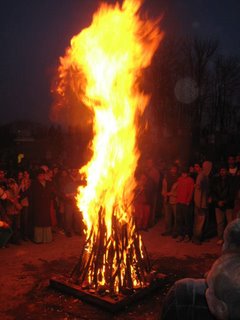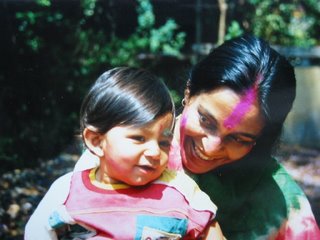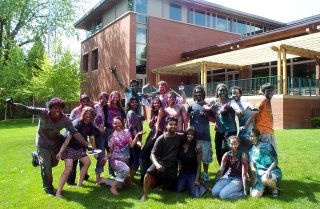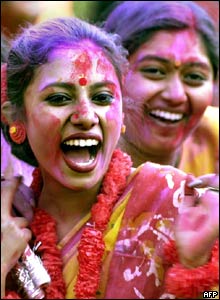This year I will miss it :( I remember playing holi till class 12th and then again not playing it for 4 years but I missed it always whenever I din't get to play that.
 The celebration
The celebration of Holi is very ancient in its origin. And by its very origin, it celebrates an ultimate triumph of the 'good' over the 'evil'. While, a feast of colors associated with the Holi, is the face of this celebration, the original reason of celebrating Holi, lies in its soul. And this gives us the 'why' of this ancient festival.
 Literally "Holi" signifies "burning"
Literally "Holi" signifies "burning" in Indian language. But, how it came to be associated with 'burning', is a story. The reference is found only in ancinet Indian mythology. And It is the legend of Hiranyakashipu, who was killed by lord to whom the celebration of Holi is associated.
This legend is relived even today on the Holi-eve when the pyre is re-lit in the form of bonfires. Even today, people celebrate this occasion. Huge bonfires are lit up every year on the eve of the full moon night of the Holi to burn the spirit of the evils. Hence the story associated with the soul of the celebration.
 Let us look into the face of it
Let us look into the face of it. How did the celebration of Holi assume a colorful face? Well, it is linked to yet another legend, the legends of Krishna. Though of much later origin, still, it was in the pre-Christian era.
It was Krishna, or, Krishn, the king of the ancient city of Dwarka, who popularised the tradition of Holi. The origin of the colorful and frolicking tone of Holi lies in the boyhood of Krishna. It all came up as part of his pranks, he used to play with his boyhood mates of Gokul and Vrindavan. Situated in north India, these are the places where he spent his childhood.

It was at this time of year, Krishna used to play pranks by drenching the village girls, with water and colors. At first it offended the girls. But they were so fond of this mischievous boy that soon their anger melted away. And, it did not take long for other boys to join in, making it a popular sport in the village.

Later, as Krishna grew up, the play assumed a new dimension. It added more colors to Krishna's legendary love life. The legend of Krishna's courtship with Radha, and playing pranks with the 'Gopi's. The girls in the 'dairy' village of Gokul were mostly milkmaids, and, hence locally known as the Gopis. The same tradition has transpired through the ages, turning it into a community festival of the masses. As time kept flowing, the culture spread roots to other regions of the country. The Holi play of Krishna is documented in hundreds of ancient paintings, murals, sculptures and scriptures found across the subcontinent.
 For me
For me holi is a festival of gujia which I am missing this year. I used to count them while eating...:)
I will play the holi with the paintbrush only...:)
Happy holi to all...my friends, all family members and all desi junta that is in US :)
~ R








